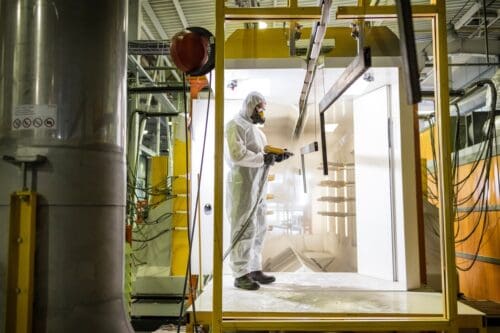Equipment needs to run smoothly in engineering applications, and that means you need to do whatever you can to reduce friction. Low-friction coatings are a very good option because they last a long time, reduce the need for maintenance, and help your equipment function more smoothly in general. Low-friction coatings have secondary benefits, as well.
Why Use a Coating Instead of a Lubricant?
If you’ve got two parts that touch during equipment operation, why not just use a plain, cheap lubricant like grease or oil? Why go through the expense of coating the parts?
Sometimes, it’s just not practical to use a liquid lubricant. Maybe you can’t have liquid or greasy substances on the parts, or there’s no way to contain the liquid so that it doesn’t drip onto other parts of the equipment. For whatever reason, using a permanent, dry coating would be better in these cases. Other times, the maintenance needed to replenish the liquid lubricant may be something you don’t want to deal with. In that case, too, a dry coating would be more helpful.
It’s also possible to use both a liquid/grease lubricant and a low-friction coating. That coating acts as a backup just in case something goes wrong with the liquid lubricant, such as a leak that lets it drain away.
Why Is Friction so Undesirable?
Severe friction is obviously a problem, but is a little friction really that bad? Yes, even a little friction can lead to premature wear on parts. That increases your repair costs and takes up more of your time. Friction can also lead to excess heat generation that can damage parts and make the working environment uncomfortable for anyone who has to be near the equipment.
Friction — even a little bit — can lead to more drag on the parts. It makes it more difficult for the parts to move smoothly and increases the energy needed to force the parts through. It may not look like it to you as you watch the equipment work, but the engine can feel it. And that extra effort needed can build up over time and wear down the engine prematurely. That little bit of friction can set off a chain reaction that leads to parts needing more frequent maintenance and replacement.
Can Low-Friction Coatings Protect Against Corrosion?
As long as the coating remains intact, it can protect the surface it’s on from corrosion. This is why you need to apply a high-quality coating that’s appropriate for the particular environment and equipment. You want something that’s durable enough to withstand any contact with other parts of the equipment (e.g., gear trains) and that can withstand environmental conditions.
Is Contamination a Concern?
Any surface can technically be contaminated with different substances, but low-friction coatings release any material that gets stuck to them more easily. If grease or dirt lands on the coating, it should be easier to wipe those away to prevent them from contaminating the rest of the equipment. This is another reason why you want to ensure the low-friction coating you choose is appropriate for the equipment in question. If the equipment is exposed to corrosive liquids, for example, a coating that isn’t resistant to those liquids will only disintegrate and become a contaminant itself.
Low-friction coatings that are also nonstick are terrific for molds, such as polyurethane foam mold coatings, as they’ll release finished parts more easily, too. There’s less of a risk of some of the molded material staying behind when you remove the finished part.
Contact Sun Coating Company if you have equipment that’s in need of low-friction coatings. Whether you need a coating for a structural engineering project or have equipment that needs food processing coating, we have what you’re looking for.


